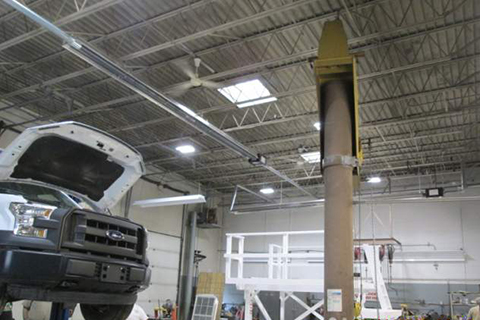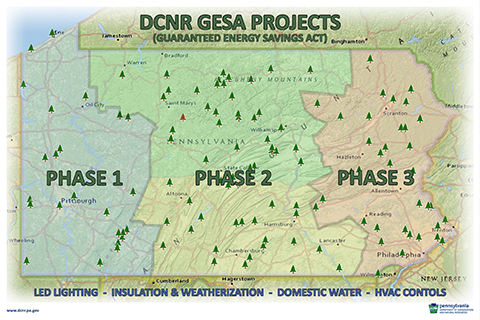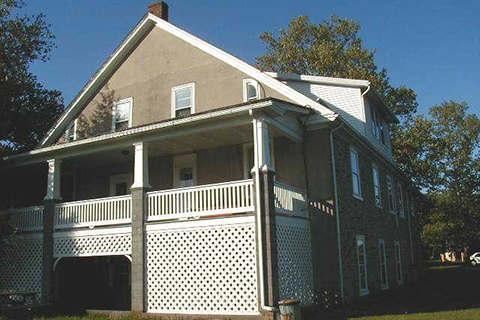We can solve problems. Even big ones.
In 1970, when the first Earth Day was organized to bring environmental issues to national attention, the country was experiencing oil spills, unregulated factories and power plants, raw sewage going into waterways, uncontrolled use of pesticides, and the loss of wilderness and wildlife.
In the 50 years since then, there have been significant achievements, including:
Article 1, Section 27 (the Environmental Rights Amendment) was added to Pennsylvania’s Constitution, guaranteeing the right to clean air and water, and the protection of natural resources.
The Clean Water Act passed, with the goal of making all rivers in the country swimmable and fishable again.
The Keystone Recreation, Park, and Conservation Fund won overwhelming bipartisan support in both the legislature and with the public; and still today supports state and local parks, state forests, greenways, and trails.
Pennsylvania’s state forests became FSC (Forest Stewardship Council) certified as sustainably managed, making it the largest publicly owned certified forest in the country.
The Superfund program was created, and, in combination with state programs, more than 7,000 formerly contaminated sites have been cleaned up in Pennsylvania.
The Clean Air Act was updated.
Bald eagles were removed from the Endangered Species List, and today there are more than 300 nesting pairs in Pennsylvania.
Pennsylvania has more than 2.5-million acres of state park and forest lands, and more than 6,000 local parks; and efforts continue to conserve land, including more than 100,000 acres from 2015-2019.
The national theme for this Earth Day 50 year is climate action, in recognition of the need to act to address this environmental challenge facing people, wildlife, and the planet.
DCNR’s Climate Change Adaptation and Mitigation Plan (PDF) is a road map for actions the department will take with Pennsylvanians to make the commonwealth more sustainable and resilient. Once a month this year the Good Natured blog will feature a solution from the plan.
Reducing Energy Usage

The outdoors probably comes to mind when you think of DCNR -- trees, trails, lakes -- so you might be surprised to know that the department’s system throughout the state includes more than 4,800 buildings.
With about a $3 million a year electric bill and using about 30 million kilowatt hours of electricity each year, DCNR determined that reducing its utility usage would help the environment, and the people of Pennsylvania who support our operations.
What is GESA?

In 2018, DCNR began its first Guaranteed Energy Savings Act (GESA) project with the help of the Pennsylvania Department of General Services.
GESA is a Pennsylvania program that enables mass upgrades of lighting, heating and cooling, and water usage to lower energy usage and spending.
The upgrades are paid for with the savings from lower energy bills that follow the improvements.
The GESA-funded improvements are occurring in three phases at DCNR facilities, with the first encompassing energy efficiency upgrades at 22 state parks and four state forest districts in western Pennsylvania.
By the numbers, the first phase involved:
- Updating more than 11,551 lighting fixtures to high efficiency LEDs
- One-hundred-seventy-two upgrades of building weatherization and insulation
- Eleven new hot water heaters
- Boiler and furnace replacements at five locations
The $5.5 million project completed in December is expected to provide a minimum of $7.5 million in total guaranteed utility cost savings over the next 20 years.
How Energy Efficiency Helps
Power plants that produce electricity from fossil fuels are the single greatest source of greenhouse gases in the United States. Lowering the demand for energy helps reduce emissions.
The yearly emissions reductions (about 2,000 tons) realized through the first phase of the DCNR GESA project, by requiring less electricity be produced and used, will have the same annual impact as:
- Taking 450 cars off the road, or
- Building 600 fewer homes, or
- Planting more than 600 acres of trees.
The second phase, expected to begin this year in the central region, will involve 52 state parks and 12 state forest districts.
How to Assess Your Home for Energy Efficiency

“Although it took some time, the process of reviewing the systems that use energy was pretty straight forward,” said Presque Isle State Park Manager Matt Greene. “You bring in someone with expertise and evaluate the things in your building that use utilities, and make decisions on how and when to move forward on the recommendations.”
Think it might be worth a try at your home or business?
You can conduct an intentional walk-through on your own and spot problems. A
“do-it-yourself” home energy audit can help you pinpoint some of the easier areas to address, and help you prepare a list should you choose to call on a professional to help.
Professional home energy audits go into detail to assess your energy use.
There are several places to start:
GESA is a part of the efforts of Pennsylvania’s
GreenGov Council. Learn more about the work to boost green and sustainable practices in state government during a meeting at 1:00 P.M., Friday, January 31, at the Pennsylvania Emergency Management Agency, 310 Elmerton Ave. in Harrisburg.
EarthDay50PA has more information about celebrating the 50th anniversary of Earth Day.